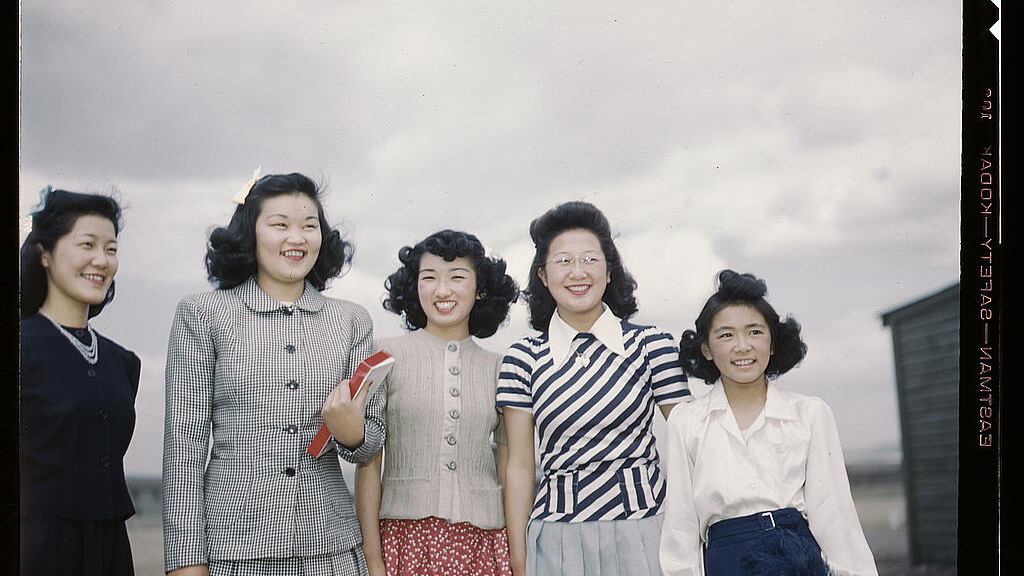Modern technology gifted the world with two major innovations in organized violence. One was the atomic bomb. The other was the concentration camp.
As journalist Andrea Pitzer writes in her new book, One Long Night: A Global History of Concentration Camps (Little, Brown and Company, 480 pages, $30), the latter was an outgrowth of the conquest of the American West. The same barbed wire that allowed cowboys to restrain massive herds of cattle was employed by military men to contain hundreds or thousands of people—usually civilians who had committed no crimes.
After Spanish colonial generals in Cuba pioneered the tactic, it was adopted by the British in Africa, the Germans in Europe, and Americans at the Portland Expo Center, where 3,676 people of Japanese descent from the area were forced into captivity by the United States War Relocation Authority during World War II.
The Expo Center was one of 10 such sites across the country. It still smelled of manure from livestock shows when it reopened as a prison for Japanese Americans in 1942. On weekends, Portlanders would drive by to gawk.
Pitzer visits Portland this week to read from her book at Powell's. With Guantanamo Bay evolving into a permanent black hole for accused terrorists, and anti-immigrant hysteria reaching a fever pitch, her work couldn't be more timely. WW caught up with her by phone last week from her home in the Washington, D.C., area to talk about this shameful and suddenly urgent piece of Oregon history.
WW: Something scary happened to you when you were doing research in Oregon. What was it?
Andrea Pitzer: I was heading from Oregon down to Tulelake, Calif., to visit the site of the former internment camp. I had a little tiny car with no power at all. It looked like a lawn mower with a couple seats on top of it. And I had neglected to look at what the weather would be going over the mountain pass. I ended up basically driving in a blizzard with no chains. It was probably the most dangerous thing I've ever done. When I got there, the farmers at Tulelake were like, "You drove over the mountains pass in that?" But I did survive, so that's good.
Tell me about the camp you went to visit. What happened there?
Tulelake was one of several sites around the country, mostly in the West, where Japanese Americans were interned during World War II. By Japanese Americans, I mean both citizens and noncitizens. There were some 70,000 Japanese American U.S. citizens that were interned as part of this project. It was one of several relocation camps where people were forced to move away from the coast and what were seen as vulnerable areas. And the thing about Tulelake was it later became the home of the people they decided via questionnaire might be disloyal to the U.S.
What kind of questions were people asked to determine their loyalty?
There were people called the no-no people. They answered no to two questions on the questionnaire. One was whether they would be willing to serve in the Armed Forces of the United States—this is while they're detained they're being asked this question. The other question was: Will you abide by the laws of the United States and take no action that would in any way interfere with the war effort? That's such a convoluted question, and then sometimes you were dealing with people who didn't speak English. You can just imagine the confusion. But people who answered no to these two key questions were labeled disloyal or potentially disloyal, and they were sent to Tulelake.
How were the camps perceived by local authorities and local white populations in places like Oregon, where their Japanese American neighbors were being rounded up?
I did find some cases where people had managed the properties and had taken care of things for their neighbors. But we also had major figures like Walter Lippmann writing columns talking about the danger of this other race. A lot of people post-Pearl Harbor were really vulnerable to this kind of incendiary rhetoric from newspapers and politicians alike. And so people who might otherwise have had more reservations felt that it was a necessary thing to do. It was a little bit shameful, but to protect the United States, it somehow had to be done. So, like most situations of great wrongs in history, you have a very small population that is really dedicated to harming another group, and then you have a large, soft middle that can be manipulated into letting it happen through fear or hatred.
You mentioned Walter Lippmann, and I kept thinking about some of President Trump's rhetoric about how we need to lock people up until we can figure out what's going on.
Very few people are truly immune to this kind of thing. Often what happens is you have some kind of crisis or catastrophe. Think 9/11, think Pearl Harbor, think the sinking of the Lusitania in World War I. People panic and so the larger population becomes vulnerable. And if you can't actually address the people who've done the thing, if you can't get the guys who bombed Pearl Harbor, then you lock up what's close at hand and available, and unfortunately that's often just citizens who have very little to do with any of it.
You also quote Supreme Court Justice Antonin Scalia, of all people, who was talking about Japanese internment and said, "You're kidding yourself if you think the same thing will not happen again." Was he right? Is it happening again?
We have to pay attention. We saw what happened in the wake of 9/11 with the kind of detentions that we were willing to turn to and this strain of torture that we seem unwilling to give up. And with these questions of whether we should be banning some group of Muslims from coming into the U.S., whether we should be deporting hundreds of thousands of Dreamers. Any time you're talking about detaining people or blocking them from going somewhere, questions of detention are going to raise their head. And it's going to come probably from something that we wouldn't necessarily think of right away as a concentration camp. So I think we always have to be on our toes. The idea that it couldn't happen here is naive.
GO: Andrea Pitzer reads at Powell's City of Books, 1005 W Burnside St., 503-228-4651, powells.com. 7:30 pm Thursday, Oct. 19. Free.

